The Biewer terrier is a small-sized, purebred terrier of German origin. Biewer terriers are also commonly referred to as Biewer yorkies and Biewer Yorkshires.
These dogs are friendly lap dogs that love playing and cuddling. They are also good with other pets and are easy to train.
Biewer terriers typically cost $1,500 to $2,500 USD.
TABLE OF CONTENTS
What is a Biewer Terrier?

From Adobe Stock
If you were to place a well-groomed Biewer Terrier on a shelf among a slew of stuffed animals, anyone looking at the array would be hard-pressed to know which of the animals was the real one. These little companion dogs are so attractive, friendly, and lovable, that people who choose to own them don’t care that the breed isn’t good for much of anything else but cuddling.
Biewers (pronounced “Beavers”) are happy, calm, easy-going dogs. They are extremely enthusiastic about life, steadfastly loyal to their owners, and charming conversation starters whenever they enter a room. Biewer Terriers rarely bark, unless it’s to inform you that someone is at the door. They are incredibly energetic and athletic, despite their small size. Short of buying a battery-operated dog, the Biewer Terrier is one of the most entertaining and social “toy” dogs available.
The breed is one of the newest in the world. It is an offshoot of a Yorkshire Terrier, with three colors (produced by the recessive pie-bald genes) in its coat instead of the standard two for Yorkies. The first documented tri-colored Yorkie was born in 1984.
By 2014 the American Kennel Club recognized the Biewer Terrier as an official breed. Finally, in 2017, the Biewer Terrier was approved to compete in the miscellaneous class in dog shows.
Biewer Terriers are the first breed in history to be defined by scientific standardization and DNA studies, as opposed to pedigree documentation. They tend to have small litters of one to four puppies, which makes it harder to supply dogs to all the people waiting to purchase a Biewer Terrier.
Gertrude Biewer made it a habit to dock the tails of the Yorkshire Terriers she raised, but the practice was gradually phased out and in 1998 was completely outlawed in Germany. While Americans commonly dock the tails of many purebred dogs, it was decided not to dock Biewer Terrier tails in order to maintain an identical look for European and American dogs. In any case, the Biewer Terrier has such a lovely, plumed tail, it is hard to imagine why anyone would ever want to get rid of it in the first place.
Appearance

From Adobe Stock
Biewer Terriers descended from Yorkshire Terriers, so they are very similar in appearance to that breed. The main and defining difference is that Yorkies only come in two colors, while Biewer Terriers are always tri-colored.
The body of a Biewer Terrier is slightly longer than its height, but its abundance of hair gives it the appearance of being square-shaped. Its head is slightly rounded, and the snout is about one-third the length of the head, with a totally black nose. A Biewer Terrier’s teeth should meet neatly in a scissor bite.
Biewer Terriers have round or almond-shaped eyes, gaze straight ahead, and give the breed an intelligent look. The eyes are always dark brown with black rims.
This breed’s ears always hang down loosely and are covered with fine hair that needs regular trimming. Its shoulders should be the same height as its hindquarters, and its legs and back should be straight and sturdy.
A Biewer Terrier has dainty, rounded feet with black or white toenails. While you might be tempted to put ribbons in your pet Biewer’s hair, and even dress him in miniature shirts or sweaters, never give in to the temptation to paint its nails with a polish made for humans. It is toxic for dogs.
If you simply can’t control yourself and want to make your perfect pet’s look complete with colorful nails, get them “done” by a groomer that carries special polish made especially for dogs.
Biewer Terrier Weight and Size
Biewer Terriers are very small dogs. They only grow to a height of 7 to 11 inches tall, and when full grown weigh between 4 ½ and 8 pounds. The largest Biewer Terriers are no bigger or heavier than a large, newborn baby!
While Biewer Terriers can live for up to 16 years, they are so cute and cuddly that you will feel like your pet Biewer is a puppy or a stuffed toy for the duration of his life.
Common Colors
The Biewer Terrier is descended from the Yorkshire Terrier and was specifically bred to have three colors on its coat instead of just two. The coloring on Biewer Terriers is called “piebald”, which means irregularly placed patches of colors.
Most Biewer Terriers have white or blue-white fur on their legs, chests, and abdomens. The most common colors for their facial fur are black and tan.
The three color combinations for Biewer Terrier coats are black/white/gold, blue/white/gold, and chocolate/white/gold. While any black coloring on a Biewer Terrier will stay black throughout its lifetime, the gold coloring tends to fade to some shade of tan as a puppy gets older. If you are lucky, you will own one of those rare Biewer Terriers who retain their vivid gold-colored patches of fur for years.
Coat
Biewer Terriers have elegant, long, silky coats. The coat parts down the middle and its plumed tail is held high in the air, waving gracefully back and forth like a queen’s handheld fan. At times you can almost forget that these beautiful dogs are live animals. When your Biewer Terrier’s fur is brushed to a shine, and you put a bow on her head, she will look very much like a porcelain figurine proudly perched on your windowsill or sofa.
The Biewer Terrier sheds very minimally and is hypoallergenic. Their coat is only one layer, so this breed doesn’t hold up well in very cold to freezing weather. Have you ever seen women walking dogs wearing sweaters or even miniature coats? The darling outfits aren’t only chosen as fashion statements, but also provide much-needed protection from the elements.
Personality and Temperament
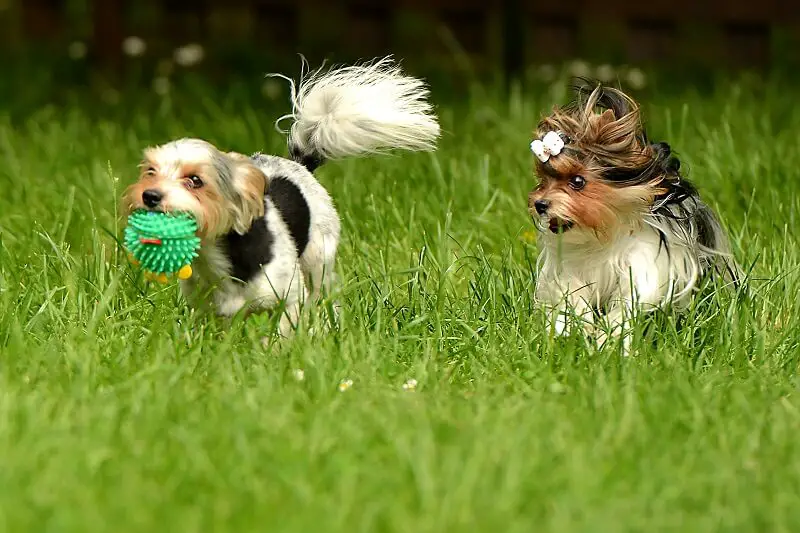
From Adobe Stock
If you are looking for a loving, good-natured companion of a dog, the Biewer Terrier is for you. This is not a breed that hunts, herds, or guards. It can’t be trained to lead the blind or help policemen search for drugs or missing people. “Best Friend” is the only title a Biewer Terrier can ever earn for itself. But it will be your very best friend indeed.
Your pet Biewer will love sitting in your lap and cuddling, as well as playing with you and amusing you for hours on end. It is an intelligent, curious breed that can get into trouble if you don’t give it enough attention and mental stimulation.
Biewer Terriers are fairly easy to train and quickly accept visitors in your home. They aren’t the yapping nipping toy dogs that annoy so many people aside from their owners.
Sometimes Biewer Terriers can be stubborn, so try to be consistent and persistent when training them and setting household rules. If you don’t want your pet to beg at the table or sleep with you in your bed, then NEVER feed them table scraps or let them climb under your covers! Once you allow your Biewer Terrier to get what he wants, he will never stop trying to win you over with his cuteness to get what he wants over and over again.
Behavior around other dogs
While Biewer Terriers are friendly, confident little dogs, they still need time to feel comfortable around other canines – most of whom are much larger and stronger. The earlier you start socializing your Biewer Terrier with other dogs in the neighborhood, the easier it will be for him to enjoy interacting with them as he grows.
Sometimes Biewer Terriers bark when they first meet a new dog, but if you remain calm and give your pet the message that he is safe, he will soon stop barking and try to engage the other dog in play.
Your Biewer Terrier will do just fine with another pet in the house, be it a dog, cat, or rabbit. Just make sure you match him up with a dog breed that won’t be annoyed by a Biewer Terrier’s occasional rambunctious nature.
Is a Biewer Terrier a Good Family Dog?
If you live in an apartment or a house without a yard, a Biewer Terrier is a great choice of a breed for your family. Since they are such small dogs, Biewer Terriers can get most of the exercise they need each day simply by running and playing inside. In general, they prefer to spend most of their time indoors. They don’t have double coats to protect them from extreme heat or cold, and their little legs can’t take them too far before they get tired out.
Biewer Terriers are very good-natured and calm and will do well living alongside other pets. They are good with children and the elderly alike. However, it is important to teach your children not to be too rough when playing with your Biewer Terrier. They are delicate dogs and can easily get squashed or injured while playing,
As they are fun-loving and playful, Biewer Terriers are also good with strangers. They love attention and take advantage of any opportunity to interact with humans. Therefore, you can feel comfortable inviting friends to your home without the fear that they will scare them away by barking, growling, orbiting.
How to Train a Biewer Terrier
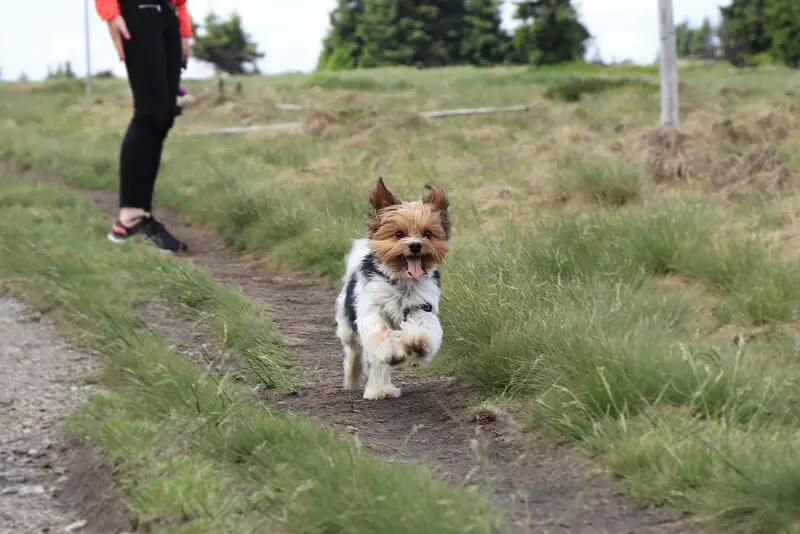
From Adobe Stock
Biewer Terriers are intelligent dogs and generally easy to train. It may take slightly longer to housebreak your Biewer Terrier than it takes with other breeds, but if it comes as any comfort, just keep in mind that if your pet has a few accidents during the dog training they will be very small puddles or piles!
If you start training your Biewer puppy from the age of 8 to 10 weeks, he should be completely housebroken and understand basic command by the age of 3 or 4 months.
The younger they are, the more curious and eager to please Biewer Terriers are. So try to establish yourself as the “boss” and teach your pet as much as you can while he is still a puppy. Biewer Terriers learn more with short lessons several times a day. If you try to teach too much for too long of a lesson, your Biewer Terrier will get bored and frustrated.
The first command to teach your Biewer Terrier is “come”. You want to reach a state where the minute you say “come” just once, your pet will come to you. If you have used the word “come” very often, but without success, you will need to start the training over and choose a new word. It can be, “here”, or “to me”, or even something amusing such as “hugs”. What is important is that you use the same word each time you want your dog to come and that everyone in your household also uses that same word.
To train your Biewer Terrier to come, first put his leash on so he can’t stray very far from you during the training session. Next, state the word you have chosen just once, and then use all sorts of other motivators to get your pet to come to you. It can be treats, or a favorite toy, or even you lying down on the floor. Whatever it is, keep offering that motivator until your Biewer comes over to you. The moment he reaches you, praise your Biewer Terrier profusely, rub and pet him, or give him any other physical attention that he loves. At this point don’t try to get him to sit. It will confuse him. Repeat these exercises several times in a row, several times a day, until your pet learns what is required of him when you say “come”.
If your Biewer Terrier fails to come over to you, no matter what you do to tempt him, you will have to somehow corner or block him so that he invariably ends up in your lap. The whole point of the training exercise is to teach him that the word for “come” goes hand in hand with him approaching you. If you have to first approach him to get him to understand, then do just that. But once the dog does come to you, never chastise him or make an angry face or use an angry tone of voice because it took him so long. That will also confuse your little friend, and it will be hard to understand if it is good or bad for him to come.
How to Care for a Biewer Terrier
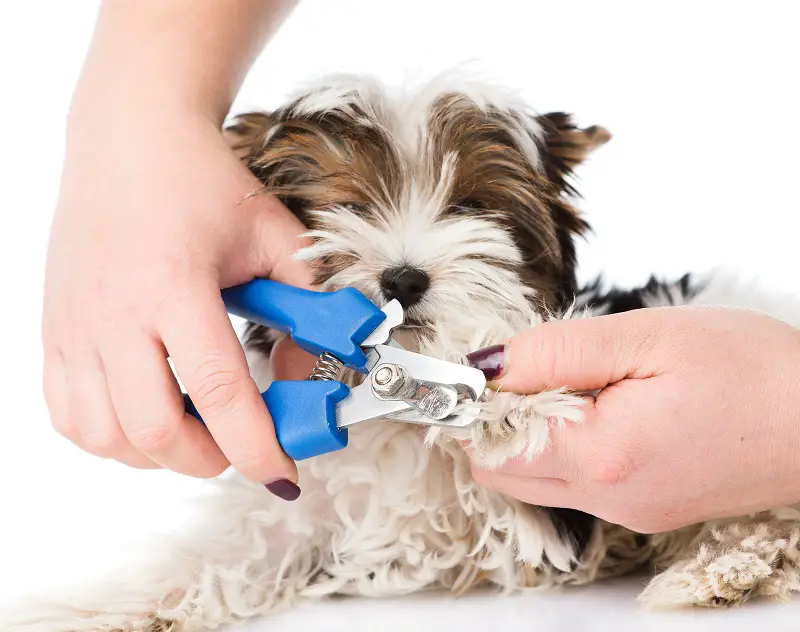
From Adobe Stock
Exercise Requirements
Imagine a porcelain figurine with Energizer batteries that wants to run and play. That’s a Biewer Terrier. On the one hand, it is a small, fragile creature that can easily get injured. On the other hand, it’s a bundle of energy and can be very mischievous at times. While you won’t ever have to take your Biewer Terrier on strenuous runs or hikes, you still need to supervise its exercise sessions. You don’t want your little friend to get hurt, or run away and get lost during his daily fitness routine.
Biewer Terriers need about 45 minutes of exercise per day as puppies, and only 30 minutes a day as adults. Your Biewer doesn’t have to be taken on walks if you spend time rolling a ball around the floor with him, playing hide and seek, or even teaching him new tricks. If the weather outside is too hot or too cold, you can walk your Biewer Terrier around a shopping mall (if it isn’t so crowded he might get stepped on), or up and down the hallways of your apartment building. This isn’t a breed that needs to sniff and mark territory outside or run through fields off-leash. It will be just as happy inside as out, if you give it the time and attention it needs for a once-daily walk or romp.
If you want to let your pet off-leash outside, it will make him very happy. But make sure to only do so in a safe, enclosed yard or dog park. Interaction with other dogs is an added bonus, but you certainly don’t want him to interact with moving vehicles!
Grooming and Shedding
Biewer Terriers have long silky coats that need daily brushing. Their fur feels more like soft human hair than coarse dog hair, and rarely gets tangled or matted. Some Biewer Terrier owners let their pets’ fur grow until it almost touches the ground. Others have it trimmed by a professional groomer. There are so many different ways you can style your pet Biewer’s hair, that it can become an obsession if you aren’t careful. Female owners in particular find comparing pictures of their pet’s latest hairdo an entertaining pastime. The internet is full of funny, cute, and elegant ideas if you aren’t sure how to style your own Biewer Terrier’s hair. Keep in mind that the Biewer Terrier is a rare breed, so most pictures of grooming styles can be found by searching for Yorkie haircut images.
Aside from brushing and occasionally shampooing your Biewer Terrier’s coat, you also need to care for its ears, teeth, and nails. The ears should be checked for wax and dirt. Nails should be kept short to avoid cracking and splitting and to prevent your pet from scratching you or your furniture. You should brush your Biewer Terrier’s teeth a few times a week because small dogs are more prone to dental disease than large breeds. Ask your dentist about what kind of toothpaste is best for a Biewer Terrier, or you can use homemade baking soda paste or coconut oil.
What to Feed a Biewer Terrier
Biewer Terriers have sensitive digestive systems. This is not a breed that can survive on table scraps alone. Feed your Biewer Terrier a high quality, low protein kibble. Canned food is not recommended because it tends to cause a buildup of plaque on dogs’ teeth.
With tiny stomachs, Biewer Terriers can only eat and digest small amounts of dog food at each meal. Therefore, for this breed it is acceptable to leave food constantly in the bowl, allowing your Biewer Terrier to eat at its discretion. However, it is important to monitor your pet’s weight and watch out for signs of obesity. If your Biewer Terrier seems to be getting too pudgy, stop the free for all eating, and move to a schedule of two to three meals a day. Let your Biewer Terrier eat as much as he wants at a meal, but when he finishes, take the bowl away until it’s time to eat again.
Mixed breeds and larger dogs tend to have very tolerant digestive systems. You can often get by with feeding these pets the cheapest dry food on the market and supplementing with nutritious table scraps. But a Biewer Terrier won’t thrive unless you feed it very high-quality food. Looks like royalty, eats like royalty!
As your Biewer puppy grows towards adulthood and then old age, his nutritional needs will change. Ask your vet when to change to a different formula or brand. Your pet’s age, energy level, weight, and state of health help the vet formulate the best diet plan.
Known Health Problems
In general, Biewer Terriers are healthy dogs. Their most common health problem is a sensitive digestive system. If they eat too much or eat the wrong type of food, they can suffer from soft or discolored stools. If your Biewer Terrier starts experiencing diarrhea, a visit to the vet is recommended.
Biewer Terriers can suffer from some of the health problems common to Yorkshire Terriers since they are descended from that breed. These problems include Progressive Rod Cone Degeneration, patellar luxation, and liver shunt.
Progressive Rod Cone Degeneration is a retinal disease that causes progressive loss of vision, and eventually blindness. This disease first appears when a dog is between the ages of 3 and 5 years old. If your Biewer Terrier is affected with PRCD, you may notice him having trouble seeing at night, or noticing objects in his peripheral fields. While genetic testing of a puppy’s parents can rule out that they are carriers of one gene that causes the disease, there are always mutations and there is no definite way to determine if a puppy will suffer from this condition as he ages or not.
Patellar luxation is a hereditary disease affecting a dog’s knees, but it cannot be detected with genetic testing. Therefore, you won’t know if your Biewer Terrier will suffer from this painful condition until it is 5 or 6 months old. The patella – the kneecap – pops out of normal alignment, becomes dislocated. Signs of patellar luxation are sudden limping or using only three legs to walk. You may notice your puppy suddenly kicking one leg out to the side, in a real effort to pop the kneecap back into position.
The disease causes pain and various levels of disability when walking, can be either chronic or intermittent, and affects up to 25% of all Biewer Terriers. Depending on the severity of the disease, patellar luxation can be treated with painkillers or surgery, and sometimes resolves itself with time.
A hereditary condition that cannot be detected before breeding is a portosystemic shunt – more commonly referred to as a “liver shunt”. This is a condition when a blood vessel develops abnormally and bypasses the liver. That means that the dog’s blood is not being filtered and cleansed properly, and he will in simple terms suffer from blood poisoning.
Every case of a liver shunt is different and the symptoms vary in their quantity and severity from dog to dog. If your Biewer Terrier has this condition, he may exhibit any of the following as he grows: weakness, poor appetite, insufficient weight gain, vomiting, salivation, seizures, depression, sensitivity to sedatives, balance difficulties, an increase in drinking and urinating, urinary tract disease, and a strange behavior of pushing his head against hard surfaces.
When any of these symptoms increase immediately after your dog eats, they are a sign of liver shunt. If your vet tells you your Biewer Terrier has a liver shunt, you will need to decide how to treat him. In some cases, quality of life is improved by diet changes. Other dogs suffering from this condition benefit from surgery. But depending on the cost of surgery or the severity of the dog’s physical state, you may end up deciding with your vet that the best course of action is to put your pet to sleep.
Whenever a puppy develops a liver shunt, it is crucial to inform the breeder who sold him to you. If the breeder is responsible, he will make sure never to mate the same pair of dogs that produced the litter your puppy came from, so the condition doesn’t show up again in future litters. And any puppy that suffers from liver shunt should be spayed or neutered, to prevent any chance of the gene being passed on via mating.
Buyer’s Guide

From Adobe Stock
How to Choose a Biewer Terrier Puppy
Once you decide you want to purchase a Biewer Terrier puppy as a family pet, and once you have contacted a breeder with a litter ready for sale, it is important to ask to see health clearance documentation for both of its parents. The puppy’s parents should have been tested for patellas and eye problems. If they pass the tests they will be listed on the OFA public website and will have CHIC numbers (an ID number issued to dogs that have passed a series of orthopedic tests).
Once you know that the litter you are interested in is healthy, it’s time to watch the puppies interacting with each other and take note of their personalities. Choose a puppy that is alert and curious when you approach. He should be confident and eager to play with you, and if he gets startled he should recover quickly.
If you want to buy a puppy to train as a show dog, there are a few more criteria you need to consider. Choose a puppy that is neither much smaller or much larger than his siblings. A show dog needs to have perfect proportions.
In terms of coloring, the only combination acceptable for show dogs is black-white-gold. In addition, the patches on the puppy’s face and head should be symmetrical. There should be equally sized tan spots on the puppy’s eyebrows, and on both cheeks. A Biewer Terrier raised to be a show dog must have a white chin, a white chest, a white abdomen, and white on the tip of its tail. And the bottom halves of all four legs must also be white.
Some breeders will let you take a puppy home at age 12 weeks, while others prefer to wait until the pups are 16 weeks old.
How Much Do Biewer Terriers Cost?
Biewer Terriers are relatively expensive for such little dogs because they are still very rare. In the United States, a pedigree puppy will cost on average between $1500 and $2500 dollars. But some breeders only sell show quality puppies, and who include in their prices airline delivery of the dog to your doorstep – they charge as much as $4000 dollars for a Biewer Terrier pup!
Before buying the first Biewer Terrier puppy you find available for purchase, check out the breeder very carefully. There are always people in the world who put their desire for money before their love of dogs and will cut any corners possible just to be able to make a quick sale. Don’t go visit a litter or start to engage in any discussion of making a purchase before the breeder provides you with documentation on the litter’s parents.
Biewer vs Yorkie Comparison Table
The Biewer Terrier breed is the product of careful breeding of Yorkshire Terriers with unique features. So while there are many similarities between the two breeds, the Biewer Terrier is rarer since it is a newer and specialized breed. If you aren’t sure that a Biewer Terrier is the best choice for you, given that it can be $1000 dollars more expensive than a Yorkie, review the differences and similarities in the table below before making a final decision.
| Biewer Terrier | Yorkshire Terrier | |
| Height | 7 – 11 inches | 8 – 9 inches |
| Weight | 4.5 – 9 pounds | 4 – 7 pounds |
| Lifespan | 12 – 15 years | 12 – 15 years |
| Coat and Coloring | Three colors, silky coat | Two colors, fine coat |
| Temperament | Affectionate, loving, doesn’t like to be left alone, lets owner be “alpha”, guards owner, easy-going, happy to stay at home | Affectionate, loving, doesn’t like to be left alone, can be aggressive and dominant, wants to please, sensitive to changes in routine, love to explore |
| Trainability | Easy to train, but very poor at following commands | Easy to train, with an average level of obedience |
| Sociability | Good with children, excellent family dogs, does well with other pets if socialized early, no impulse to chase cats or other animals | Not very kid-friendly or family-friendly, does well with other pets if socialized early, wary of strangers, high need for social interaction, strong hunting impulse |
| Barking | Occasionally | Above average |
| Grooming | Easy to groom, needs daily brushing, almost no shedding | Harder to groom, needs professional grooming, minimal shedding |
| Price | $1500 – $2500 | $1200 – $1500 |
Summary
Biewer Terriers are cute, affectionate, loving little dogs. Perfect for people who don’t have the time, energy, or space for raising a larger breed, Biewer Terriers still have enough energy and personality to give you the run for your money.
If you are looking for an intelligent and mischievous lap dog who is comfortable around people and other pets alike, the Biewer Terrier may be just what you are looking for.
It may take some time to find a breeder with available puppies since demand is much higher than supply. But even if you can’t get a dog for a few months, once you bring your Biewer Terrier home you will know it was definitely worth the wait!

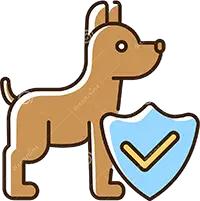


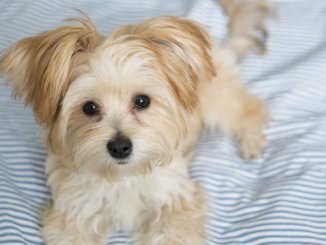

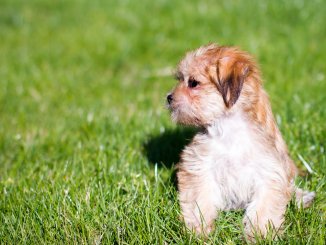
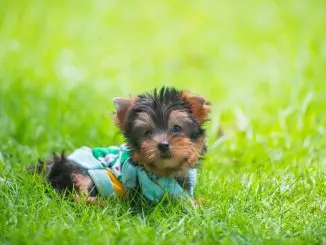
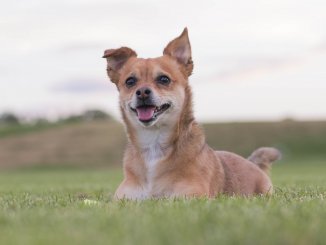
Be the first to comment